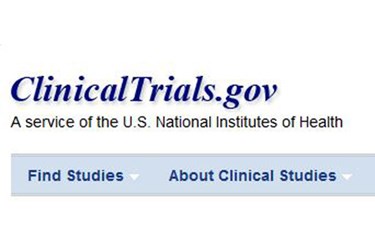ClinicalTrials.gov: Progress Made, But One-Third Of Results Still Missing

By Ed Miseta, Chief Editor, Clinical Leader

<p>When ClinicalTrials.gov was established by the FDA Modernization Act of 1997, the goal was to create a public information resource, run by the U.S. National Library of Medicine (NLM) and the National Institutes of Health (NIH), which would track efficacy studies launched from Investigational New Drug (IND) applications. Today it is the largest clinical trials database in the world, holding registrations from 200,000 trials conducted in more than 170 countries.</p> <p>The goal was always to create a resource that the public could turn to for information about a clinical trial and to locate experimental treatments for serious diseases. Specifically, the law required ClinicalTrials.gov to provide information about:</p> <ul> <li>Federally and privately funded trials</li> <li>The purpose of each drug</li> <li>Note eligibility criteria for participation</li> <li>The location of trial sites</li> <li>An enrollment contact for interested patients</li> </ul> <p>The results database went live in 2008. Today, compliance with the requirements are improving, but according to NIH data recently shared by Sen. Charles Grassley of Iowa, more than a third of applicable study results are still missing.</p> <p>In a <a href="http://www.grassley.senate.gov/sites/default/files/news/upload/2016-02-05%20NIH%20to%20CEG%20%28clinical%20trial%20reporting%29.pdf" target="_blank">letter</a> to Grassley dated February 5, 2016, Francis Collins, director of the Department of Health & Human Services (HHS), attempts to answer six questions posed to him by Grassley in a separate <a href="http://www.grassley.senate.gov/sites/default/files/news/upload/2015-12-23%20CEG%20to%20NIH%20%28clinical%20trial%20reporting%29.pdf" target="_blank">letter</a> dated December 23, 2015. The answers are interesting and reflect the problems inherent in trying to manage a system as vast and far-reaching as the ClinicalTrials.gov site.</p> <p>Grassley’s first question asks for the last two years, how many trials should have had information reported to NIH? In a nutshell, Collins replies he doesn’t know. Specifically, Collins states, “…it is not possible to determine, with certainty, which trials registered with ClinicalTrials.gov are ‘applicable clinical trials’” under the FDA Amendments Act of 2007, or even whether all applicable trials are registered. Collins notes part of the problem with answering the question relates to “current ambiguities in the law and an absence of independently verifiable information about all existing clinical trials being conducted worldwide.”</p> <p>Still, Collins does estimate that the overall rate of results reporting since the database launch in September 2008 is around 64 percent. The rate is 71 percent for industry trials, 61 percent for NIH-funded trials, 93 percent for intramural NIH-funded trials, and 46 percent for other government and academic trials.</p> <p>Grassley’s second question related to the timeliness of filings. He asks for those same two years, how many clinical trial reports were received on time and how many were not received at all. While results are required to be submitted no later than 12 months after the Primary Completion Date, Collins notes for certain applicable clinical trials, the period is up to three years. If the drug or biologic was not approved, licensed, or cleared by the FDA, the results may not be due at all. Still, Collins was able to estimate that of those trials that likely had results due in the last two years, 60 percent submitted either the results or a request for an extension. For those results that were not submitted within one year of the completion date, the average and median number of days late were 233 and 182, respectively. </p> <p>The next question asks about the time it took for NIH to post information it received to the database. NIH will first perform a review of the data to determine its validity, meaningfulness, logic, consistency, and formatting before posting the results. Collins notes the review will generally take 30 days, with additional time needed for the submitting party to address identified issues. All told, it takes, on average, 93 days for results to be posted, with a median time of 55 days.</p> <p>Later questions revealed that NIH does not post notices of submissions received late or not at all, and no penalties have been assessed to responsible parties. However, Collins does note both NIH and FDA have been active in informing responsible parties of the requirements of ClinicalTrials.gov, including outreach to, and follow-up with the clinical trials community.</p> <p>Finally, Grassley asks about steps taken by NIH to see that trials conducted by its own scientists and those under NIH grants will comply with reporting requirements. Those efforts currently seem to revolve around training, and include information on the ClinicalTrials.gov and NIH websites, presentations at conferences, reports that are accessible to account holders in the system. </p> <p>If the goal of ClinicalTrials.gov was to make information on trials available to the public, after eight years of operation I have to think Grassley was less than enthralled with the results. A 60 percent success rate, in most classrooms, is still a failing grade. But Collins does state efforts continue to be made to properly report results to the public. A Notice of Proposed Rulemaking, issued in November 2014, addressed the issue of whether results from unapproved, unlicensed, or uncleared products should be reported. The comment period closed in March 2015 with approximately 900 comments received. NIH is working with FDA to consider the comments in development of the final rule.</p> <p>A draft policy, issued in tandem with the NPRM, also proposes to hold NIH-funded trials to an even higher standard of transparency. It calls for registration and results of all NIH-funded clinical trials, regardless of phase or type of intervention.</p> <p>“Although reporting of clinical trial information to ClinicalTrials.gov is not yet what it should be, our data suggest that the rates of results reporting over the last several years are improving,” says Collins, in closing. He attributes the improved results to outreach and a greater awareness of reporting requirements. He anticipates these results to continue to improve in the future.</p>
